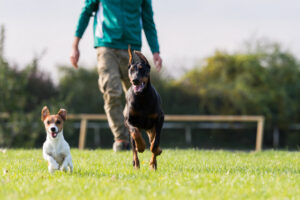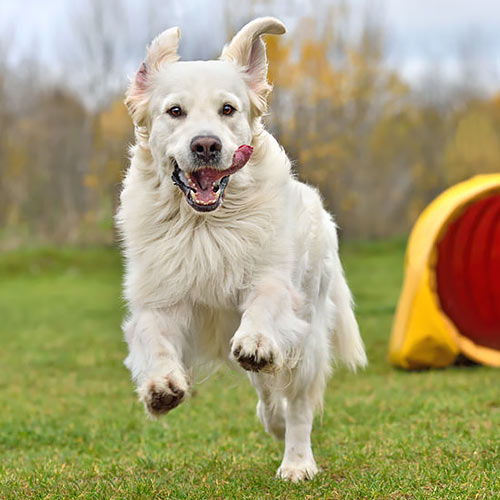Americans are notoriously stupid when it comes to greeting a strange dog. We do all the wrong things and then blame the dog when she reacts in an unfriendly manner. Many bites could easily be avoided. But it’s the dog who gets the blame, is labeled as aggressive, and may end up dying to compensate for our ignorance and stupidity.
Imagine with me, you are walking along the sidewalk in your neighborhood when your neighbor walks up to you with his dog on the end of the leash. In addition, this dog may be pulling, lunging, jumping etc. The neighbor says, “Hi Neighbor. Meet Bruno. He’s friendly.” What do you do?
The fundamental point in these moments is to be calm and non-threatening. Do not make quick movements…that is what a threat does. Here are some tips for being calm and non-threatening to the dog.
- Keep your hands to your side. Do not reach out your hand!!!!!!!!!!!!! This is the first reaction of too many people. We have been mistakenly conditioned to think that the best way to greet a dog is to let him sniff your hand. This is false! It is viewed as a threat by many dogs, especially dogs that are already fearful of their surroundings. It ends in a bite in far too many situations. Or, worse yet, we feel uncomfortable and pull our hands away from the dog, usually in an upward motion. This moving hand now becomes prey to the dog and strongly encourages him to follow the hand by jumping and possibly nipping. This the not the dog’s fault. He is simply doing what YOU encouraged him to do. The better reaction is to keep your hands calmly at your side. Some people have stated that they feel vulnerable with their hands positioned this way. But the truth is, if the dog is going to bite you with your hands here, it will definitely bite you if you reach out to him. Keeping your hands calmly by your side tends to decrease a dog’s perception that you may be a threat. If you’re skeptical of a bite, make your hand into a fist so the fingers are not accessible, but keep the hands calmly by your side. This method is called “becoming a tree.” You stand still with no “branches” (i.e. arms) and look away from the dog (we’ll talk more about this in a moment).
- Allow the dog to approach you. In human interaction, it is usually a sign of friendliness when we approach another human. Not so much in the canine mind. The better solution is the let the dog approach you. She may sniff, look into your face, or not. That’s ok. You can keep talking with your neighbor during this interaction. Once the dog perceives that you are not a threat (their body language reveals this), then you may calmly reach out to her (after receiving permission from her human). Even then, use confident, intentional, steady movements. You don’t want to startle the dog. Remember, you are the stranger. Let us also mention that you need to pet the dog on his shoulder, back, or chest. Very few dogs enjoy their head being patted, contrary to popular opinion.
- Avoid direct eye contact. In American culture, direct eye contact is viewed as a positive thing. In the canine world, direct eye contact is viewed as a threatening gesture. As the dog approaches you and you are still chatting with your neighbor, do not look the dog in the eye. You may look at the ground (a submissive gesture), at your neighbor, or elsewhere. It also helps to turn slightly away from the dog (another submissive gesture), that is, with your side facing the dog. Understand that in the dog world, a face-to-face stance usually signals aggressive intent.
- Do not make high-pitched squeals. This excites a dog, but not always in a positive way. Your excitement should be contained so as not to encourage a dog to nip or jump. Again, this is not the dog’s fault, this is YOUR fault for inciting the dog act this way. Keeping your emotions under control will help the dog to keep his emotions under control.
- When you can approach, do so in an arc, not in a direct straight line. When two dogs meet that do not know each other, a direct approach is sign of bad intentions, a threat. Submissive dogs and dogs that do not have bad intentions will approach another dog in an arc, that is, in a line that looks something like a half moon. Dogs view this as being mannerly. We can give the dog a sense of threat by moving in a direct line to him.
- Respect the dog’s space. Remember how you feel when a complete stranger invades your personal space? The dog must feel the same way. Don’t force yourself on the dog. If he wants to be near you, he will be…by staying nearby. If he moves away, respect his wishes. Don’t become an annoyance! Let this proceed on the dog’s term, or you may get bit. This is especially true with shy, timid dogs.
Remember, just because you are told that a dog is friendly does not guarantee that the dog is friendly. Do not let down your guard; rather, use the above protocol anyway.
Another word to the wise is, do not assume that you have a license to approach another dog. Ask his human first, that is, get their permission. If the human refuses that privilege, do not take it personally. He/she is simply looking out for the best interest of his four-legged friend. Do not bully into the dog’s space with the attitude that “I love dogs and therefore have a right to disregard your advice.” This is impolite at best and stupid at worst.
Keep in mind as well that bending over a dog is another threatening gesture. They may tolerate this from family and friends but probably not with strangers. If you must, crouch down – not over – the dog. However, this puts your face within reach of the dog’s mouth so think twice before doing so.
Accept the fact that not every dog will accept you. Not every human accepts you, so why should you expect that from the dog? Furthermore, just because you “love all dogs” doesn’t mean that all dogs love you. If you do all the above but the dog is not interested in you, respect those wishes. It’s the polite, humane thing to do.
Children should be taught how to utilize these actions as well.
Let’s look at the other side of this equation – the handler’s side. When you and your dog are meeting new people, do not tense up. Your dog feels that tension, through the tight leash, your tone of voice, jerky movements. If you react fearfully or nervously, chances are good that your dog will also.
Everybody involved wants this encounter to be friendly and positive. If we all make the effort, it greatly increases the chances that it will be just that.


